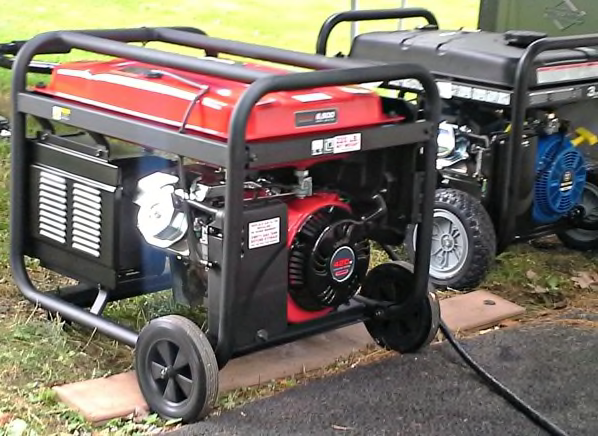The forecast of a calmer 2014 hurricane season due to the development of an El Niño weather pattern is cold comfort to the residents of Pilger, Neb., where a pair of tornadoes converged this week, killing at least two. But even if you're breathing a sigh of relief about the prospect of fewer storms, any break in the weather is time to take a good look at your generator—especially since repair shops will be too busy to help you once the next storm hits.
A stationary generator, which is installed on a fixed site on your property, should be less of a concern because it performs periodic self-diagnosis routines all year round, and it will flash alerts on its display regarding service needed. Still, you typically need to check the display for messages. A few generators we've tested accept optional add-on products that can e-mail or text you and a servicing dealer should service be needed—so you don't need to scramble for service when a storm is imminent.
But with a gasoline-powered portable generator, the onus is on you to regularly put it through its paces and keep it supplied with fresh fuel, oil, and whatever else its manual specifies. So if you haven't been firing yours up monthly, do it now. If the model has an electric start, charge its battery. Start up the generator. To test the whole system, not just the generator's engine, use your transfer switch to put a load on the generator.
And if the generator won't start? With no storms on the horizon, this is the best time to know that. If you left old fuel sitting in the machine without at least occasional starting, you might need a carburetor rebuild. Take it over to the shop or arrange to have the unit picked up, fixed, and dropped back off. From this point on, add stabilizer to gasoline before fueling up. Change oil annually but check its level more often, and change the spark plug annually. And if you haven't been using the generator other than periodic startups, siphon the old gas and put in fresh, stabilized fuel.
Whenever you run a portable generator, keep safety in mind. Run the machine only outdoors, at least 15 feet away from the house. Never run it in the basement or garage or other enclosed space. Reduce fire risk by turning off a gasoline-powered generator and letting it cool before refueling. When you think you might need to run the generator to supply power, stock up on extra gasoline. A gas-powered generator uses about a gallon an hour. Store gas only in an ANSI-approved container in a cool, well-ventilated place. Adding stabilizer to the gas in the can will help it last longer.
When it's time for a new generator, be sure to see our buying guide for generators before checking our generator Ratings of more than three dozen portable and stationary models, which we'll be updating later this summer. If you buy one, be sure to take the time to install a transfer switch for a portable. For stationary models, you might also need to leave time to obtain the necessary permits.
—Ed Perratore (@EdPerratore on Twitter)





















